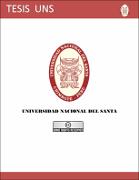Mostrar el registro sencillo del ítem
Formulación y caracterización de una bebida rehidratante a partir de zumo de aguaymanto (Physallis Peruviana) elaborado para agroindustria La Morina
| dc.contributor.advisor | Paucar Menacho, Luz María | |
| dc.contributor.author | Bejarano López, Edith Luz | |
| dc.contributor.author | Rodríguez Cortegana, Emilyn Anabel | |
| dc.date.accessioned | 2016-09-20T10:28:22Z | |
| dc.date.available | 2016-09-20T10:28:22Z | |
| dc.date.issued | 2015 | |
| dc.identifier | 30721 | |
| dc.identifier.other | T/12/0261/2015 | |
| dc.identifier.uri | https://hdl.handle.net/20.500.14278/1974 | |
| dc.description.abstract | AGUAYMANTO (Physallis Peruviana): En la agroindustria esta fruta antes era subestimada, ignorada y muchas veces menospreciada. “En el país crecía de modo silvestre en las laderas de la sierra peruana, y era el alimento de los pobres; pero ahora felizmente esto se ha revertido y es así que actualmente se distribuye en los mercados con mucho éxito”. El aguaymanto se consume de distintas maneras: en conserva, como néctar, mermelada, yogurt, helado, en extracto, fruta fresca, pulpa congelada o como ingrediente en exquisitos potajes de la floreciente gastronomía Novo andina (Encina y otros 2007). BEBIDAS REHIDRATANTES: Se denominan bebidas rehidratantes o isotónicas a las bebidas con gran capacidad de rehidratación debido a que contienen la misma presión osmótica que la sangre (330 miliosmoles/litro -mmosml/l-), lo que provoca una rápida y óptima absorción de sus componentes.(Revista Consumer - Julio/Agosto -2004). Las bebidas isotónicas como, a diferencia de las bebidas energizantes no contienen ningún tipo de estimulante como la cafeína, aportan no solamente agua sino también carbohidratos y electrolitos, reemplazando la pérdida de estos vitales elementos, asegurando un máximo rendimiento por más tiempo.(Revista Consumer - Julio/Agosto -2004). | es_PE |
| dc.description.abstract | The present investigation , part the possibility to make a drink that rehydrate people, which is mainly consumad by young scholars, athletes and all those with physical wear and need to replenish lost water and minerals. Aguaymanto despite its smallness disagrees with nutritional greatness, is an excellent source of vitamin C (20-40 mg /100 g) and provitamin A (carotene UIDE 3000 /1 OOg) also has sorne vitamins B. Furthermore the protein (0.3 g /1 OOg) and phosphorus (0,55mg /100g) containing are exceptionally high for a fruit (National Research Council. 1989). As in iron, phosphorus, fiber and carbohydrates. Due to the large presence of nutrients and vitamins, this food is beneficia! to preserve the . health of specialized tissues such as the retina, helping the development and health of the tissues of the skin and mucous membranas, amebiasis Controls (Camacho, 2000 ). The statistical design to be used for the research will be the design compositiva center rotational (DCCR). The contents were considerad independent variables: i) the concentration of isotonic salts and ii) the concentration of sweetener, the respective levels are shown in Table 02 were performed factorial trials 4, 4 axial testing condition and 3 tests condition repetitions axial point center, a total of 11 trials. The dependent variables or responses were analyzed: i) the physico-chem ical (color, brix, acid, pH) ii) sensory characteristics (taste, smell, color and textura) .So himself used the statistical software Statistica 5.0 (Statsoft, USA) to determine the effects of the independent variables, calculating regression coefficients (R2), making the analysis of variance (ANOVA) and to construct response surfaces, with a significance level of 5%. The results obtained in this research were: 1.La physicochemical composition of the fruit was aguaymanto per 100 gr: 78.55% moisture, 1.11% ash, 1.91% acidity, pH 3.63, soluble solids 14.83, and color (L * = 70.27, a* = b * = 57.5111.39 ),2. lt was achieved to make a rehydration drink from juice made aguaymanto for Agroindustria The Marina SA; the formulation being 05 (0.1% salt concentration and 6% sweetener concentration) the accepted with 96.67% of panelists,3 .Managed to establish a rehydration drink from the physico-chemical and organoleptic results obtained,4.Able to assess the influence of isotonic salt concentration and concentration of sweetener in the physicochemical and organoleptic parameters of the hydration drink,5. The production cost was S /. 4129. 15, the cost per unit of rehydration drink S /. 1.03, earnings per production S 1 1759.21 and the balance point of 257 units. | en_US |
| dc.description.uri | Tesis | |
| dc.format | application/pdf | en_US |
| dc.language.iso | spa | es_PE |
| dc.publisher | Universidad Nacional del Santa | es_PE |
| dc.rights | info:eu-repo/semantics/openAccess | en_US |
| dc.rights.uri | http://creativecommons.org/licenses/by-nc-nd/2.5/pe/ | * |
| dc.source | Universidad Nacional del Santa | es_PE |
| dc.source | Repositorio Institucional - UNS | es_PE |
| dc.subject | Aguaymanto (Physallis Peruviana) | es_PE |
| dc.subject | Zumo de aguaymanto | es_PE |
| dc.subject | Formulación y caracterización | es_PE |
| dc.title | Formulación y caracterización de una bebida rehidratante a partir de zumo de aguaymanto (Physallis Peruviana) elaborado para agroindustria La Morina | es_PE |
| dc.type | info:eu-repo/semantics/bachelorThesis | en_US |
| thesis.degree.name | Ingeniero Agroindustrial | |
| thesis.degree.grantor | Universidad Nacional del Santa. Facultad de Ingeniería | |
| thesis.degree.level | Título Profesional | |
| thesis.degree.discipline | Ingeniería Agroindustrial |
Ficheros en el ítem
Este ítem aparece en la(s) siguiente(s) colección(ones)
-
Tesis [316]
UNIVERSIDAD NACIONAL DEL SANTA
Av. Pacífico 508 - Nuevo Chimbote, Ancash - Perú | Telf. (51)-43-310445
Todos los contenidos de repositorio.unp.edu.pe están bajo la Licencia Creative Commons






